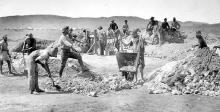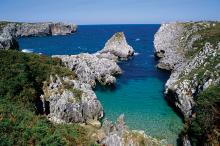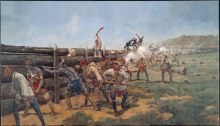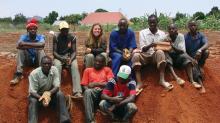
"Where exactly was the Red Stick barricade located?"
It’s a common question for visitors to Horseshoe Bend National Military Park in Alabama. The site of the single deadliest battle for Native Americans involved with American forces, the location of the Red Stick Creek fortification has been unclear until recent work involving archeologist Cameron Wesson.
As part of a National Park Service project commemorating the 1814 Battle of Horseshoe Bend, Wesson and his colleagues have been searching for the location of a Native American fortification. Horseshoe Bend is a forgotten aspect of the War of 1812 and the first Creek War, but an estimated 860 Native American men, women and children were killed in battle.
The Creek built a breastwork, a military fortification, to protect their village from American forces led by Andrew Jackson. Its location was a mystery until last summer when Wesson and colleagues from the Southeast Archeological Center and Auburn University used non-invasive archaeological techniques, including using ground penetrating radar to examine the area. Wesson also employed a gradiometer for remote sensing, which allows researchers to see beneath the earth’s surface without excavating large amounts of soil, and having a minimal impact, to help determine the fortification’s location. Accompanying him were students participating in Lehigh’s annual field school.
“These are monumental events in American history and the students were deeply involved in our work,” says Wesson, Lucy G. Moses Professor of Anthropology in the department of sociology and anthropology. “Students learn best by doing so this is the best way to learn how to do archaeology. These are real archaeological sites, so the stakes are high, and the students take the work very seriously.”
In the spring of 2014, the Park Service will hold festivities commemorating the battle, including Native Americans whose ancestors fought there, as well as Euro-Americans whose ancestors fought with Andrew Jackson. The Horseshoe Bend Military Park has a commitment to protect the resources as adequately as possible. Wesson’s work also helps ensure proper management of the property in the future.


































